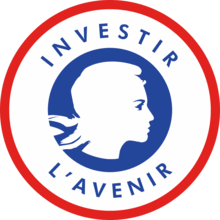Politiques Innovantes et Collectes des Ordures bio-sourcés en Logements collECTifs
Goals
The innovation developed aims to help public decision-makers design targeted communication (like Nudge) policies to support large-scale behavior change in households in order to reach waste sorting targets by 2025. The originality of our approach is to combine the development of a direct evaluation tool for these policies, measuring their real effectiveness via social experimentation, and the pooling of the results of these social evaluations to propose communication policies that are adapted to the target audiences, and are thus much more effective than traditional policies that send the same message to everyone.Social experimentation methods allow us to observe real household behaviors towards bio-waste sorting and to analyze the impact of different communication policy prototypes. We focus on households that do not have the possibility or the wish to have an individual collection bin or composter and therefore have to sort their bio-waste in their house and then bring their bio-waste to the voluntary collection points (PAV). In this context, two types of efforts are required from households: i) sorting at the source within the home, and ii) bringing their waste to the collective collection point.
Actions
The project has 5 steps, the objectives of which are:
Step 1: Take stock of the nudges to be tested and prepare the social experiments
The project will consist in making an inventory of existing policies in France in collaboration with the Compost Plus Network (survey of local authorities), and then to set up an online survey of French households, still with the support of the Compost Plus Network and local authorities, to better understand the brakes and levers for the adoption of the sorting of bio-waste at source.
Step 2: Establish an experimental protocol and design a digital application on a smartphone and turnkey communication materials
This is a document describing in detail the different steps and conditions of the experiments: i.e., the selection of the study sites, the choice of monitoring indicators, the communication policies to be tested. These different points of the protocol will be defined in collaboration with our field partners. We will also build a set of specifications for the design of a digital application on a smartphone for households that will allow local authorities to directly collect information on their sorting activity (for example via the monitoring of the opening of voluntary bins) and to communicate with households (to apply nudges).
Step 3: Carry out the social experiments and monitor the participating households
This stage consists in following the experimental protocol established in the second stage, in order to test the operationality of the experimental protocol and to collect the first data.
Step 4: Design a calculation tool
This tool will make it possible to calculate the impact of the communication policy on the sorting behavior of households in the sector concerned.
Step 5: integrate these different elements into a platform for collecting and sharing results
This platform will be built in such a way that an operator can then take it in hand to develop consulting and support activities for communities
Translated with www.DeepL.com/Translator (free version)
- Project Number2104-001
- Call for project
- Start date :1 January 2022
- Closing date :31 December 2024
-
Research units in the network


